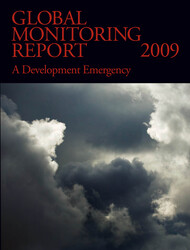
Zimbabwe: Technical Assistance Report-Report on Data Quality Assessment for Public Sector Debt Statistics Mission (February 6–12, 2025)
Zimbabwe: Technical Assistance Report-Report on Data Quality Assessment for Public
Sector Debt Statistics Mission (February 6–12, 2025)
READ MORE...
Volume/Issue:
Volume 2025
Issue 060
Publication date:
ISBN:
Add to Cart by clicking price of the language and format you'd like to purchase
Available Languages and Formats
Topics covered in this book
This title contains information about the following subjects.
Click on a subject if you would like to see other titles with the same subjects.
Exports and Imports , Investments and Securities-General , Public Finance , Business and Economics - Statistics , Data Quality Assessment Framework (DQAF) , Debt Reporting , Debt Transparency , JSA , Public Debt , Public Sector Debt Statistics (PSDS) , Zimbabwe , , IMF-World Bank , IMF's Statistics department , debt report , statistics database , public sector debt statistics , IMF's e-GDDS , Government finance statistics , Securities , Domestic debt , Global
Summary
This report discusses the findings and recommendations of the 2025 assessment of the data quality of the public debt statistics of Zimbabwe against the IMF’s Data Quality Assessment Framework (DQAF). The assessment was undertaken as part of a project to strengthen the quality of public sector debt statistics (PSDS) in selected African countries, funded by the Government of Japan. Discussions with various stakeholders as well as review of data received and published indicate that Zimbabwe’s public debt statistics are broadly reliable and continue to improve. The responsibility for debt management and reporting is clearly specified and established in the law. The flow of information needed to compile Zimbabwe’s public sector debt statistics is efficient, well-coordinated, audited annually by the Auditor- General, and the report presented to Parliament. Compilation methods broadly follow international statistical standards and there is evidence of strong and frictionless oversight provided by the top management of Zimbabwe’s Public Debt Management Office. The report noted the need for sustained commitment by top management to enhance debt data quality, transparency, and accountability. Recommendations include inter alia expanding the sector coverage of the public debt reports to include direct non-guaranteed borrowing of public units outside the budgetary central government, assessing the materiality of liabilities related to public private partnerships (PPPs) and financial leases, and expanding debt instruments to include expenditure arrears and other accounts payable.
Copyright © 2010 - 2025
Powered by:
AIDC



